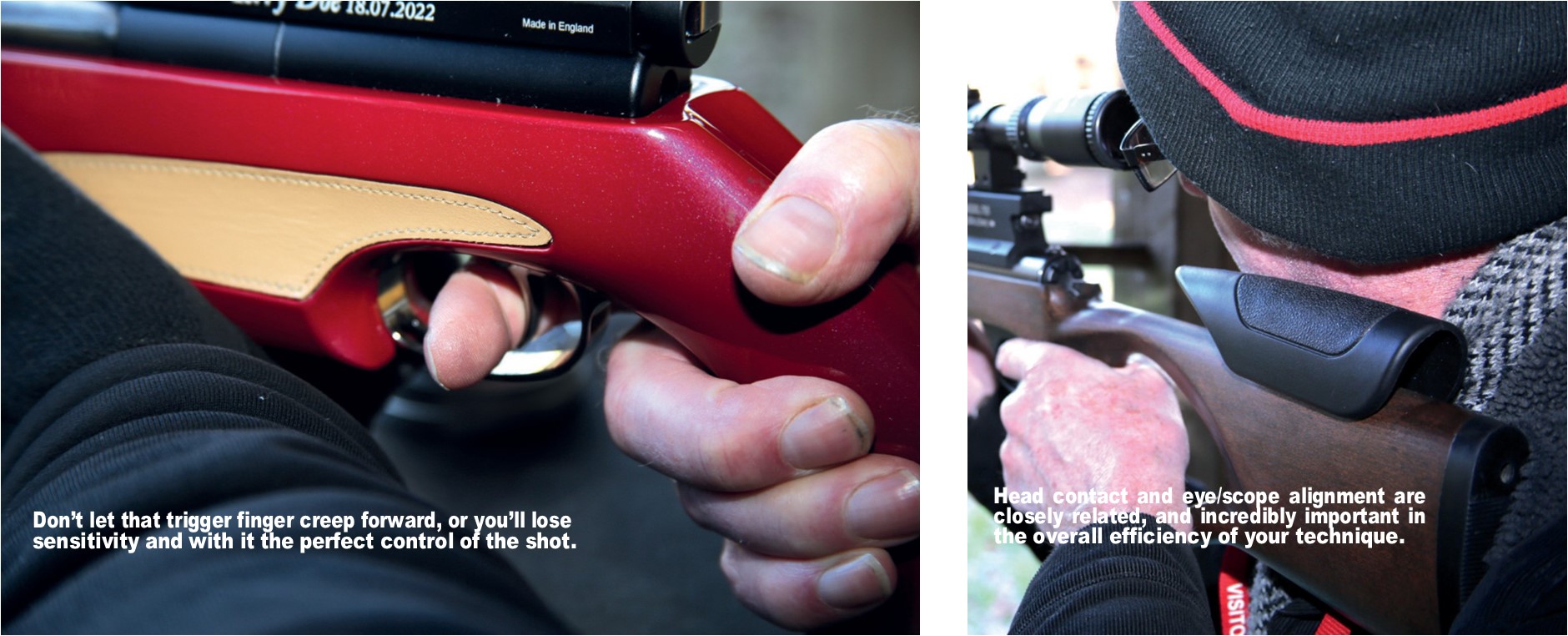Have you checked your shooting technique lately? TERRY DOE believes it’s time you did
You know that old saying, ‘if it ain’t broke, don’t fix it’? I think that piece of workaday wisdom needs a qualifier, along the lines of, ‘but first, make sure it really ain’t broke.’ Dodgy grammar aside, that qualifying statement should be applied to our shooting technique, and the mindset that governs it, on a regular basis, because faults can creep in unnoticed, and before you know it, your technique, and even your entire approach to what you do, can become decidedly ‘broke’.
DOMINO EFFECT
Let’s begin with the real-world effect of these creeping technical errors, and specifically what they do to your results. Just suppose you’ve been a bit hasty in choosing and/or setting up your rifle and scope to fit you. By not making the required effort to match your build and shooting style to your hardware, you will have introduced a degree of compromise, and with it muscular strain and every negative thing that goes with it.
Now add a less-than-optimal trigger technique, possibly due to the perceived need for haste because you’re not as comfortable as you could be, due to the previous lack of gunfit care. This situation creates a fertile medium for the growth of subconsciously anxious head-lifting to see your result as you release each shot, and there goes the essential act of follow-through, and with it the smooth conclusion to your shooting technique. With these factors acting against you, your success rate just can’t be as high as it should be, and you absolutely will miss more targets than you should. You may well still maintain a high success rate, but the point is to be as efficient as you can possibly be, and if glitches are sneaking into your technique, that peak efficiency is being undermined.
SEE THE UNSEEN ENEMY
This stuff, and its domino effect on downrange accuracy is going on all the time, mostly unknown to its victims, and that lack of awareness is possibly the most damaging aspect of the whole deal. The first task, then, is to reveal these errors, or at least to run a thorough check to make sure they’re not present.
The best way by far to do this, is to get a knowledgeable shooting buddy to watch you shoot, and even to film it on your phone, so a record of your technique can be secured and studied. Here’s what you’re looking for:
CHECK 1. Are you using the tip of your finger to contact the trigger blade, or have you let it slide forward so that the first ‘crease’ of the finger is the main point of contact? If the latter is the case, you’ll need to adjust your hand position, or move the trigger blade forward, if possible.
CHECK 2. Is your head/eye alignment perfectly suited to the position of your scope? An observer will immediately notice if you’re ‘shuffling’ your head on the rifle’s cheekpiece in order to get a good sight picture through the scope, and whilst small movements are acceptable, any significant extension/retraction/tilting of the head will need to be fixed. This requires a combination of cheekpiece adjustment/modification and the repositioning of the scope, but it’s a worthwhile investment.
CHECK 3. Are you moving your eye from the scope before the pellet strikes its target? This is a major error, and possibly the least appreciated cause of reduced results. Train yourself to stay behind the scope, holding perfect aim, until the pellet lands. This promotes perfect follow- through, on-aim stability, and encourages smooth overall technique. Try teaching yourself to hold back the trigger, rather than letting it go forward, and remain on aim until the pellet strikes.
CHECK 4. Are you as relaxed as possible during the entire shooting sequence, or does tension build as you approach the point of releasing the shot? Again, this can creep into your technique without your realising it, and it’s another factor in the perceived need to hurry the shot as instability sets in.
Proper gunfit is your best friend, here, along with using your breathing to control the motion of your rifle during the aiming sequence.

WIN-WIN SITUATION
Running a regular diagnostic on your technique and the way your hardware is set up to work with you always yields a positive result, if it’s only that everything is working as it should. Usually, though, you’ll find an area you need to work on, and that in itself is a significant discovery, because by identifying any problem, you’ve already taken the biggest step toward fixing it.
Realise, too, that what was ideal a year or two ago, might not be so today. Our bodies change, our eyesight does too, and these changes must be accommodated, and often literally supported, by our hardware and technique. Above all, never believe another accepted phrase, ‘you can’t teach an old dog new tricks.’ Not only can you do it, you can keep on doing it – and your shooting will be all the better for it.